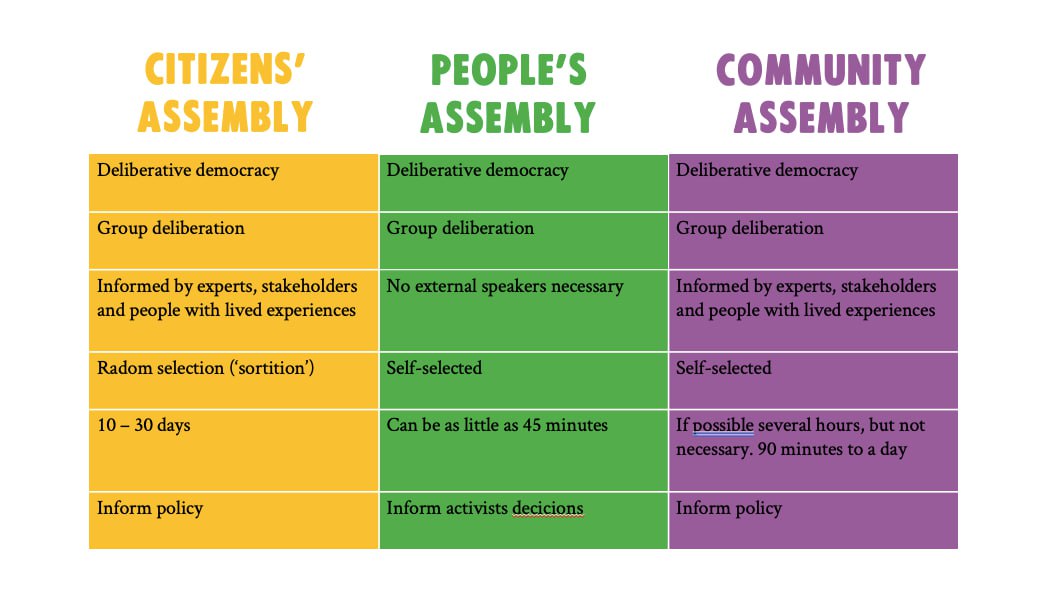FAQs about People's Assemblies
FAQs
How many people do I need to hold a PA?
Ideally deliberation groups of 6 to 12 people and a minimum of 3 groups. However, they sometimes run with fewer people and the PA process can be used with several hundred and possibly over a thousand people.
Where do I begin if I want to run a People’s Assembly?
Read the manual,page takeon thehow to run a People's Assembly- Step by Step AND attend or watch an assembly facilitation training and look at the PA script..
Can I hold a PA without attending thePeople's Assembly/Community Assembly Facilitation training?
Yes but read the manual and the script and if you are finding it difficult be honest with people present. People appreciate openness and will support you. You will usually find that there are people there with some experience and they are delighted to help.
What is the structure of the PAAssembly Facilitation TrainingTraining?
The coursesession aims to help you feel more confident about facilitating subgroups or organising and facilitating People’s Assembliesassemblies and we give you the opportunity to connect with other facilitators to help organise and facilitate People’s Assembliesassemblies in pairs or teams. We also talk about active listening, inclusion and allowing all voices to be heard and how to deal with difficult situations.
Duration: 2 hrs 15 minutes
How is the UK PA Team Organised
There is a UK PA Circle and most of the Regions / Nations have a PA Point who acts as the main point of contact. In most Regions / Nations there is a communication channel (usually Telegram) dedicated to PA Facilitation. There is also a UK wide Telegram channel for PA Facilitators and anyone interested in PA Facilitation.
How do People’s Assemblies differ from Citizens’ Assemblies?
Both Citizens’ Assemblies and People’sCommunity AssembliesAssemblies?
All threee are based on the ‘assembly’ process which enables people to share equally and openly within an environment that is non-judgemental and respectful – and facilitated to that effect. TheySee boththe usegraphic smallbelow facilitatedfor groupsan toexplanation deliberate.of the differences:
Members of a People’s Assembly are self selecting – anyone who turns up can participate. Participants may be given a small amount of information in the input section (e.g. a 10 minute talk or a short video). They typically lasts for 2 hours, possibly more when it’s out on the street during a rebellion; and the decisions or output are usually used to inform activists.
In contrast, Citizens’ Assemblies are ordinary people, randomly selected from a population by the process called sortition to make sure they are representative of key characteristics such as gender, age, ethnicity, education level and geography. The members of a Citizens’ Assembly learn about critical thinking and then they hear balanced information from experts and stakeholders. A Citizens’ Assembly may run for 10 to 30 days. Finally, the decisions or output of a Citizens’ Assembly are used to inform policy (e.g. government policy on a difficult and contentious subject).
